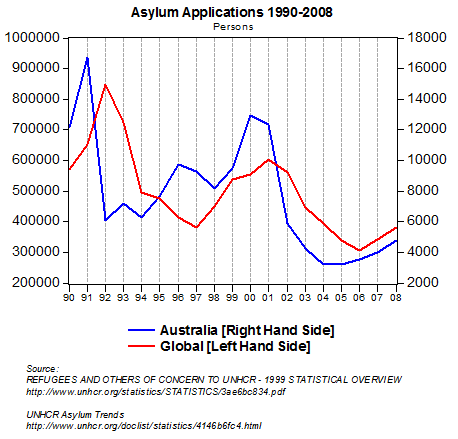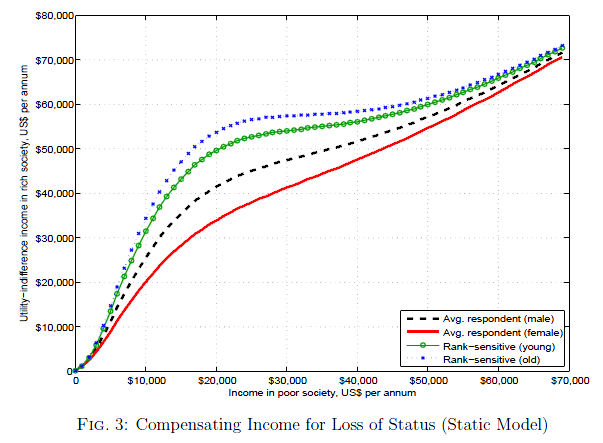The contemporary public debate over population growth in Australia has, in my mind, overlooked a crucial question that would help us understand population issues in more depth. Why is there so little illegal immigration to Australia?
If the way illegal immigration is portrayed in the media is anything to go by, many would suspect that there is a lot of illegal immigration. With a backdrop of a continent of 3billion, 90% living in relative poverty (compared to Australia), you would expect a literal war to stop the boats.
While there are about 54,000 visa ‘over-stayers’ currently residing in Australia, there are less than 5,000 detained asylum seekers (and even fewer boat people), while annual population growth is around 300,000. The graph below shows the number of asylum seekers is primarily driven by conditions in their country of origin, rather than as a result of policies of their destination country, resulting in a synchronise global trend usually driven by cycles of conflict.
Beyond those with genuine claims to asylum, why are there so few ‘over-stayers’? 54,000 is the entire stock, and the annual number of over-stayers is a mere 15,000. Our close neighbour Indonesia, for example, has an estimated 39million people living in poverty. Apart from the chances of failure, why is illegal immigration to Australia not more common?
As a side note, it has also been a mystery to me why the wealthier countries of Europe can have flat or falling populations while they appear such attractive migration destinations from less wealthy European countries.
While many factors determine migration decisions, from social ties, family, risks and so on, one important factor is often overlooked – people value relative income, or social rank, as well as absolute income. Since illegal immigration is only likely to be an opportunity for the relatively wealthy in their poor home country, they are going to have to make a decision about not only taking the risk of the journey, but of trading off having a high status in a poor country (big fish in a small pond) or low status in a wealthy country (small fish in a big pond).
The figure below is from recent research into the impact of status and rank on migration decisions. To be compensated for the loss of rank, a person from a low income country, say in this example, Mexico, on the mean income of $14,000pa, would need to see an increase in their permanent income of $10,000pa just to make up for the loss of status from moving to the US where the mean income is $46,000. For some older rank sensitive individuals, they would need a three-fold increase in income to make up for the loss of rank and status.
Recognising this ‘irrational’ behaviour adds to our understanding of labour immobility for lower income workers more generally. Acknowledging the importance of rank and status also contributes to our understanding of utility, and provides some quantification of the relative importance of rank and status on decisions more generally, such as career, housing, and family choices.
Tips, suggestions, comments and requests to [email protected] + follow me on Twitter @rumplestatskin

